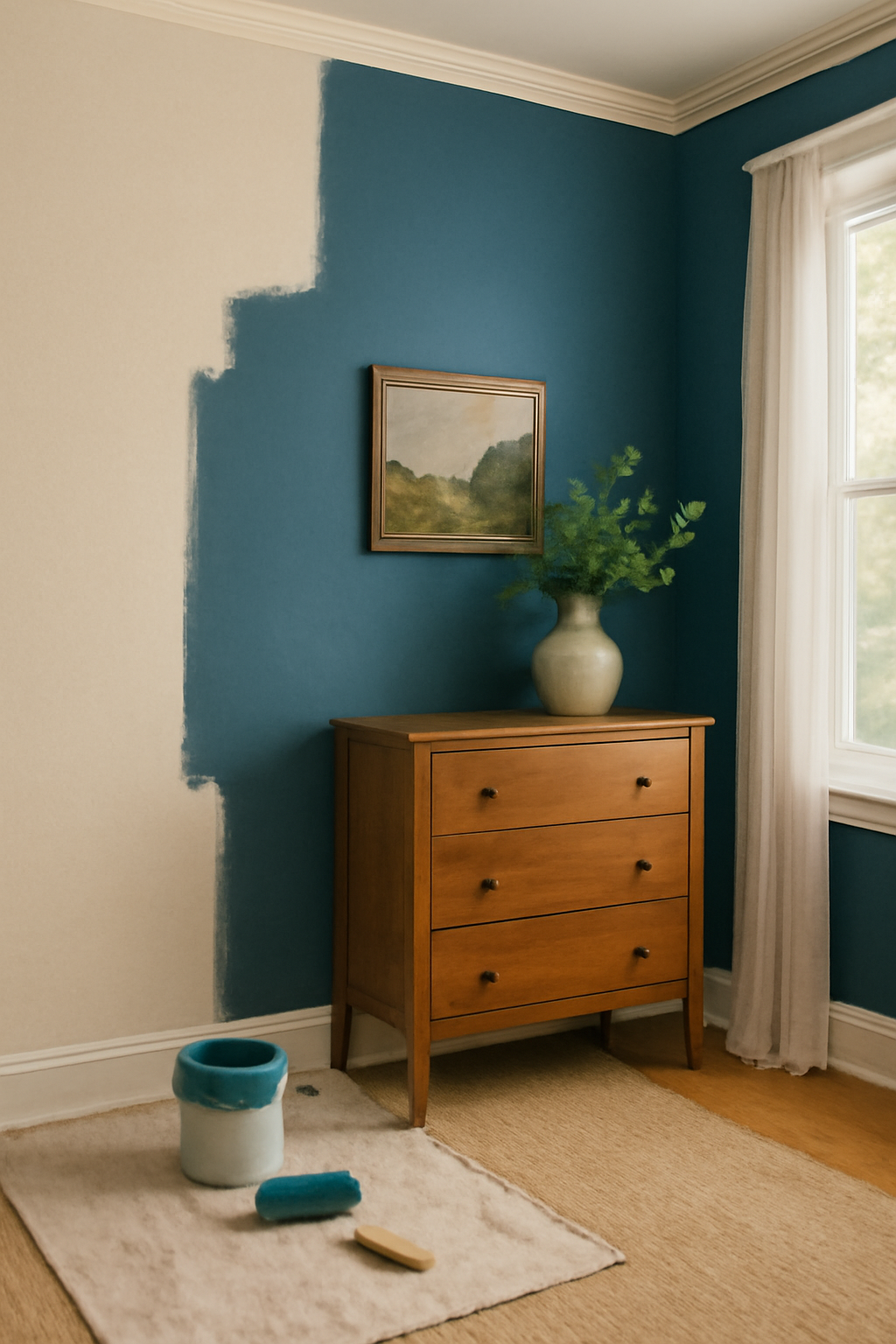When it comes to home improvement, paint is one of the most affordable, accessible, and transformative tools at your disposal. A fresh coat of paint can completely change the atmosphere of a space—making it brighter, cozier, more modern, or more serene—without the need for major renovations.
Whether you’re renting or owning, using paint strategically can dramatically enhance your home. Here’s how to unlock the full power of paint.
Why Paint Is the Ultimate Makeover Tool
Unlike expensive furniture or structural updates, paint offers:
- Affordability: A gallon of paint can cover hundreds of square feet for less than the price of a dinner out.
- Flexibility: You can repaint at any time to match your evolving style.
- Simplicity: With a bit of prep, painting is a beginner-friendly DIY project.
- Impact: Color instantly affects the mood and perception of a space.
From walls to furniture and even ceilings, the possibilities are endless.
Choose the Right Color for Your Goal
Color selection is more than just aesthetics—it influences how the room feels and functions.
- Light colors (whites, creams, pastels): Make a room feel bigger and more open.
- Dark colors (navy, charcoal, emerald): Add drama, intimacy, and sophistication.
- Warm colors (reds, oranges, yellows): Energize and stimulate conversation.
- Cool colors (blues, greens): Calm, relax, and create a peaceful environment.
- Neutrals (grays, beiges): Offer timeless versatility and serve as a backdrop for bolder décor.
Test your paint samples in different lighting throughout the day to see how they shift in tone.
Use Accent Walls to Create Focal Points
Painting a single wall in a bold or contrasting color can give a room new dimension.
Benefits of accent walls:
- Add visual interest without overwhelming the space.
- Highlight architectural features like fireplaces or built-in shelving.
- Separate different zones in open-plan layouts.
Popular accent wall ideas:
- Deep navy or black in bedrooms for elegance.
- Terracotta or olive green in dining rooms for warmth.
- Soft blush or sage in nurseries for calmness.
Think Beyond the Walls
Paint isn’t just for walls—you can use it on ceilings, doors, trim, and furniture to enhance any space.
- Ceilings: A light blue can make a room feel airy, while a darker tone adds coziness.
- Doors: Paint interior doors a bold color (like black or red) for an unexpected touch.
- Trim: Use contrasting trim for a classic look, or paint trim the same color as walls for a modern, seamless effect.
- Furniture: Revamp old dressers, bookshelves, or tables with a fresh coat in a fun color.
You can even use paint to mimic architectural details by creating faux panels or borders.
Play With Paint Techniques
There are creative techniques that go beyond simple solid colors:
- Color Blocking: Combine multiple shapes and colors for a modern, artistic effect.
- Ombre Walls: Gradually fade from dark to light shades.
- Stripes or Geometric Patterns: Add energy and structure.
- Two-Tone Walls: Paint the bottom half a darker shade and the top a lighter one for contrast.
Use painter’s tape, levels, and patience for clean, professional results.
Make Small Spaces Feel Bigger (or Cozier)
Color affects how we perceive space.
To make a room feel bigger:
- Stick to light, airy colors.
- Paint the ceiling a slightly lighter shade than the walls.
- Use glossy finishes that reflect light.
To make a room feel cozier:
- Go for deeper, richer colors.
- Choose matte finishes to absorb light and reduce glare.
- Use one color on all surfaces, including trim and ceiling, for a cocooning effect.
Paint as a Mood-Setting Tool
Different rooms benefit from different moods—and paint can help create them:
- Bedrooms: Cool blues and muted greens promote rest and relaxation.
- Living Rooms: Warm taupes or greiges encourage gathering and comfort.
- Kitchens: Bright whites or sunny yellows make the space feel clean and energizing.
- Home Offices: Sage green, dusty blue, or even charcoal can help with focus and calm.
Match your paint choices to how you want to feel in each space.
Don’t Forget the Finish
Finish impacts both look and durability. Here’s a quick guide:
- Flat/Matte: Hides imperfections, best for low-traffic areas.
- Eggshell: Slight sheen, easy to clean—great for living rooms and bedrooms.
- Satin: Smooth and washable—ideal for kitchens, bathrooms, and kids’ rooms.
- Semi-gloss: Durable and shiny—perfect for trim, doors, and cabinetry.
- Gloss: Highly reflective—use sparingly for a modern touch.
Higher-gloss finishes are easier to clean but can highlight flaws, so apply with care.
Prep Is Just as Important as Paint
No matter how good your color choice is, poor prep will ruin the finish.
Steps to follow:
- Clean and dust the walls.
- Patch holes or cracks and sand smooth.
- Use painter’s tape to protect trim, baseboards, and fixtures.
- Prime the surface, especially when painting over dark or glossy paint.
Take your time during this step—it pays off in the end.
Add Personal Touches With Custom Paint Projects
You can personalize your space with smaller-scale paint DIYs:
- Paint the inside of bookshelves or cabinets in a bold color.
- Use stencils to add patterns to furniture or accent walls.
- Create a painted headboard directly on the wall in your bedroom.
These unique touches make your home feel more creative and customized.
Repainting Is Part of the Fun
One of the best things about paint is that it’s not permanent. If you don’t love the result—or your tastes change—you can always try something new.
That freedom makes it easier to experiment, express your style, and keep your home evolving with you.
A Little Paint Goes a Long Way
Paint is one of the easiest ways to give your space a total refresh. Whether you go bold with color or stay neutral and clean, the right paint can elevate your home without breaking the bank or requiring major construction. Grab a brush, tap into your creativity, and start transforming your space today.
